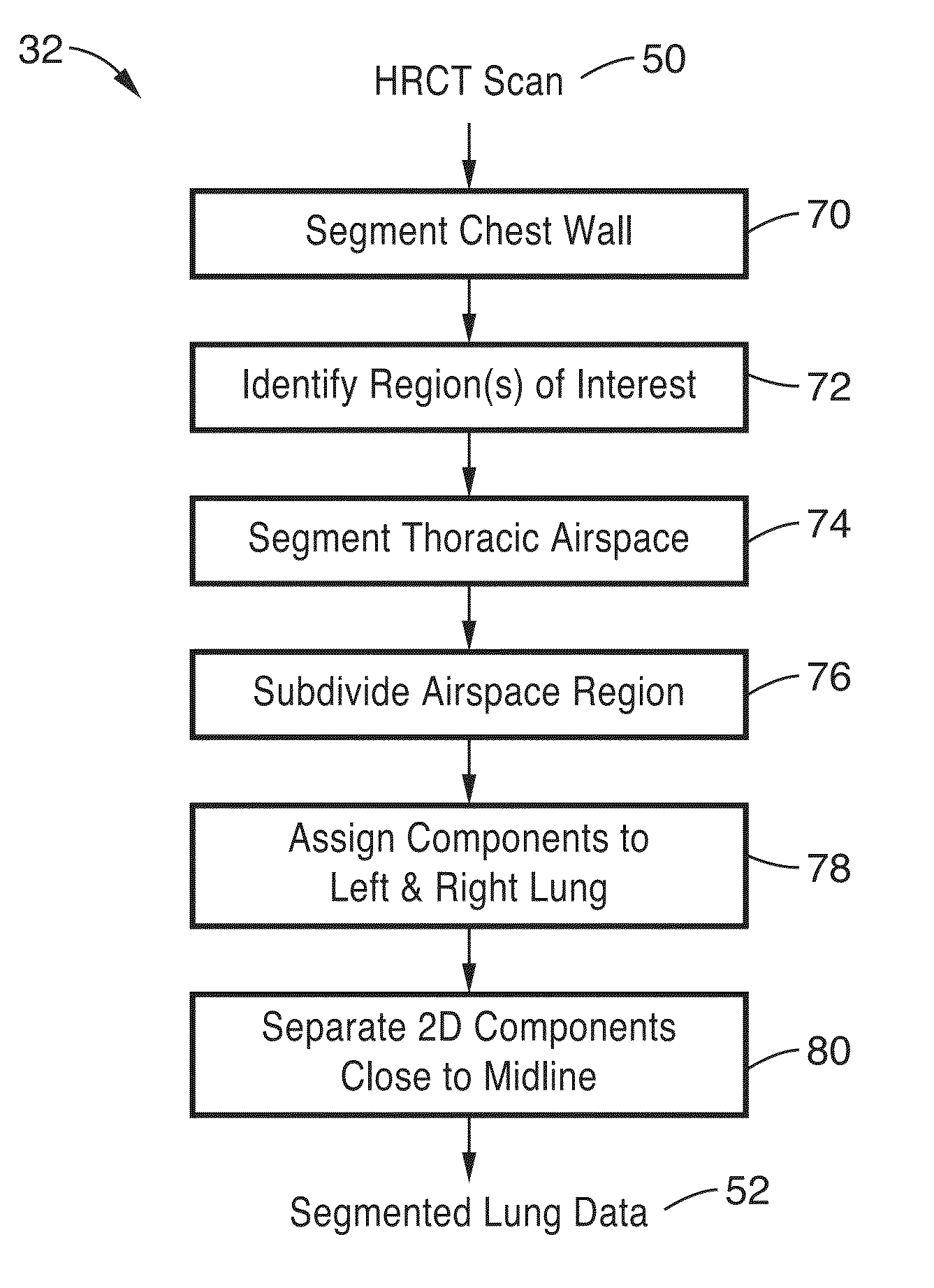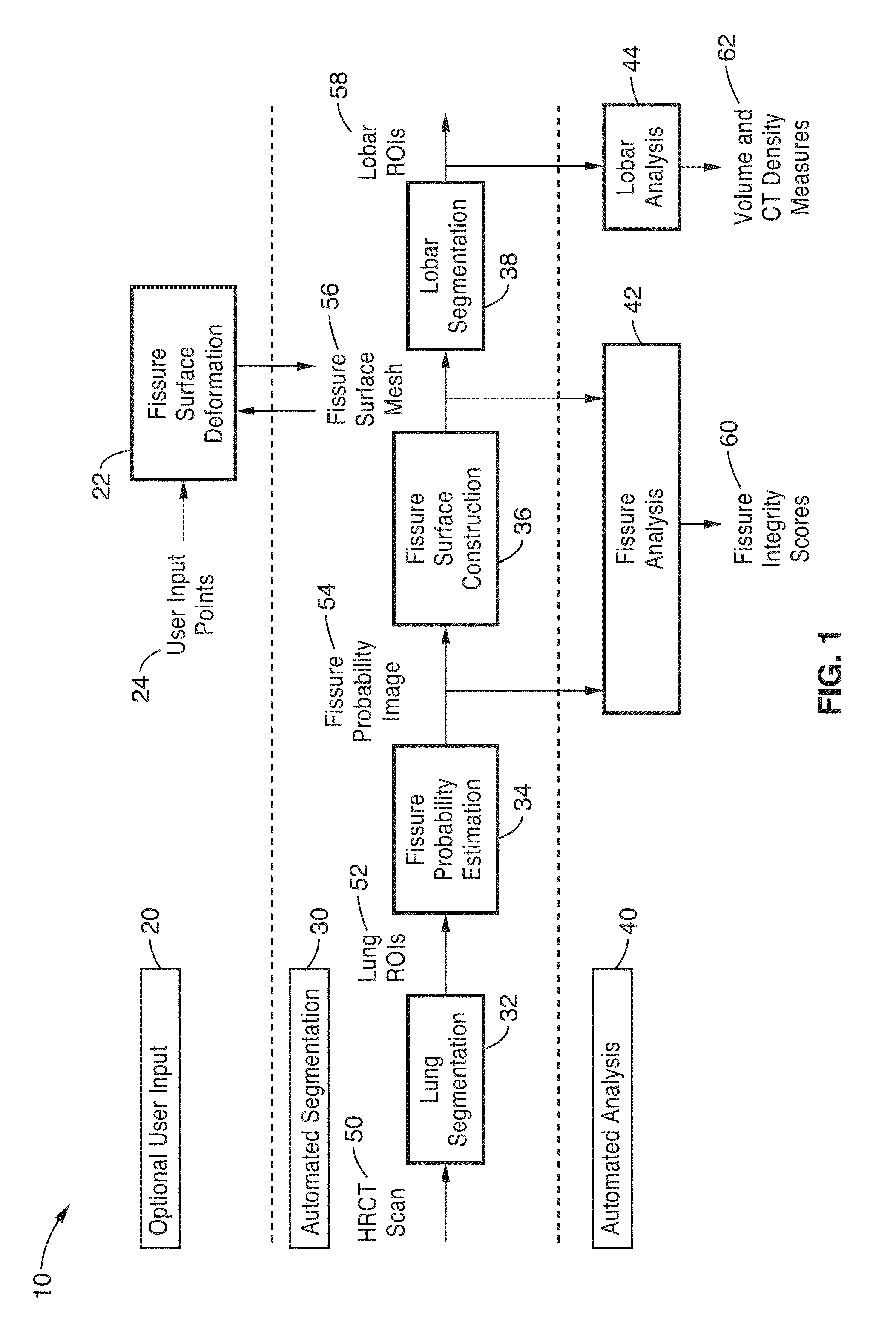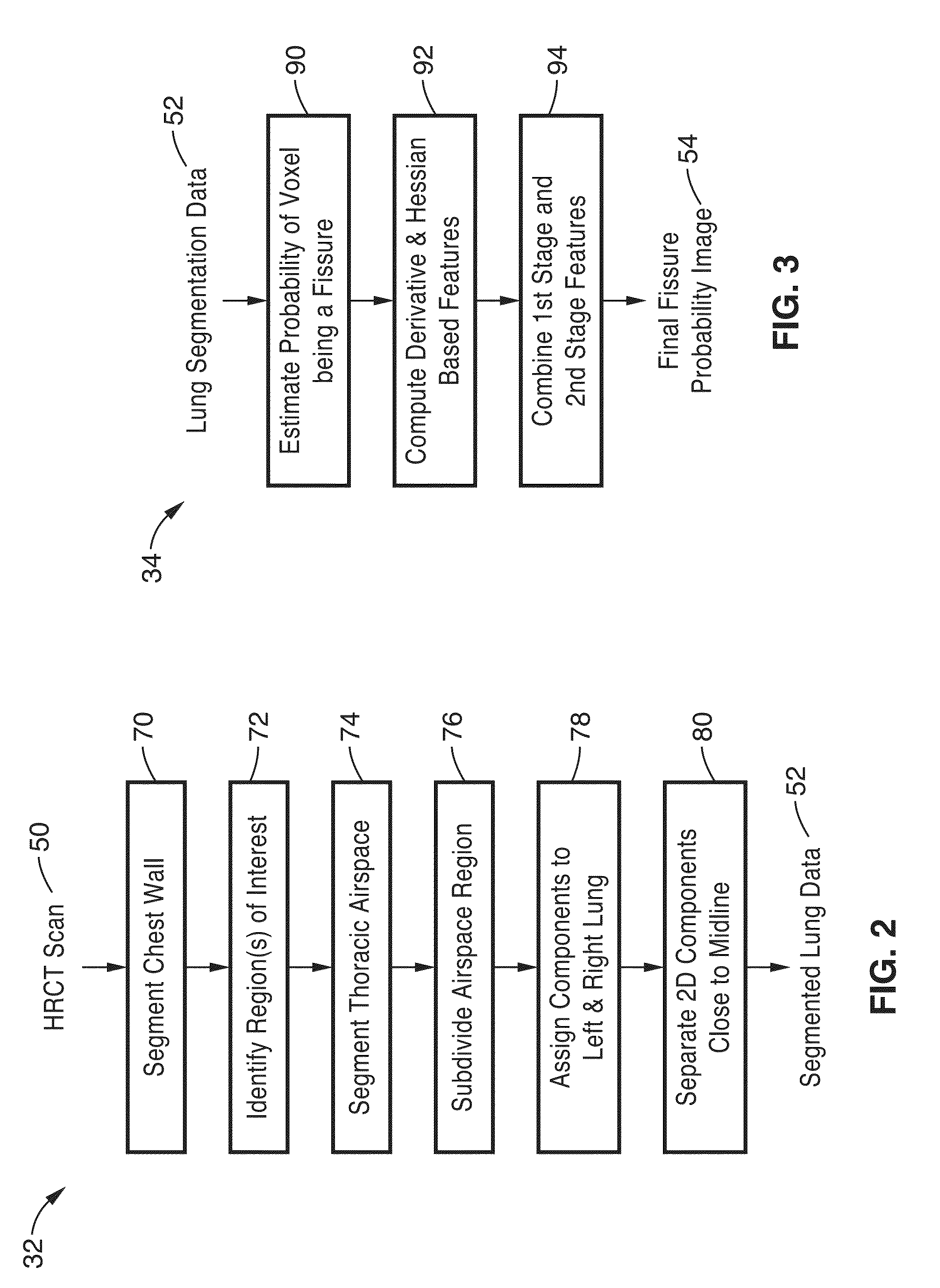Lung, lobe, and fissure imaging systems and methods
a computed tomography and lobe technology, applied in the field of computed tomography imaging, can solve the problems of difficult automated lobar segmentation, difficult lobe segmentation, and limited diagnostic imaging role in clinical practi
- Summary
- Abstract
- Description
- Claims
- Application Information
AI Technical Summary
Benefits of technology
Problems solved by technology
Method used
Image
Examples
experiment 1
[0092]c. Experiment 1
[0093]Training of the supervised fissure enhancement filter and tuning of the parameters for the method in sections A and B above was performed using a total of 18 chest CT scans obtained from a research database, with slice thickness and in-plane resolution ranging from 0.55 to 0.78 mm and from 0.5 to 1.25 mm respectively. The method was tested on chest CT scans from another research database, consisting of 41 scans from different patients with severe emphysema and forced expiratory volume in one second (FEV1)<45%. The slice thickness and in-plane resolution of the test set ranged from 0.5 to 1.0 mm and 0.54 to 0.83 mm respectively.
[0094]Approximate nearest neighbor searching was used to implement the KNN classifiers of the supervised fissure enhancement filter, where the number of nearest neighbor K was set to fifteen and an error bound ε of 0.5 was used. To reduce computational time, the multiple scales used for computing the confidence and performing the evo...
experiment 2
[0100]d. Experiment 2
[0101]Training of the supervised fissure enhancement filter and tuning of the parameters for the method described above in sections a and b was performed using a total of 18 chest CT scans obtained from a research database, with slice thickness and in-plane resolution ranging from 0.50 to 1.25 mm and 0.55 to 0.78 mm respectively. The method was tested on chest CT scans from another research database, consisting of 22 scans from different patients with either idiopathic pulmonary fibrosis or severe emphysema (forced expiratory volume in one second <45%). The slice thickness and in-plane resolution of the test set ranged from 0.6 to 3.0 mm and 0.59 to 0.80 mm respectively.
[0102]Accordingly, the systems and methods of the present invention provide a powerful automation combined with intuitive, human intervention and feedback to achieve a robust, widely-applicable system that can even handle the most diseased or abnormal images where fully automated segmentation is ...
PUM
 Login to View More
Login to View More Abstract
Description
Claims
Application Information
 Login to View More
Login to View More - R&D
- Intellectual Property
- Life Sciences
- Materials
- Tech Scout
- Unparalleled Data Quality
- Higher Quality Content
- 60% Fewer Hallucinations
Browse by: Latest US Patents, China's latest patents, Technical Efficacy Thesaurus, Application Domain, Technology Topic, Popular Technical Reports.
© 2025 PatSnap. All rights reserved.Legal|Privacy policy|Modern Slavery Act Transparency Statement|Sitemap|About US| Contact US: help@patsnap.com



